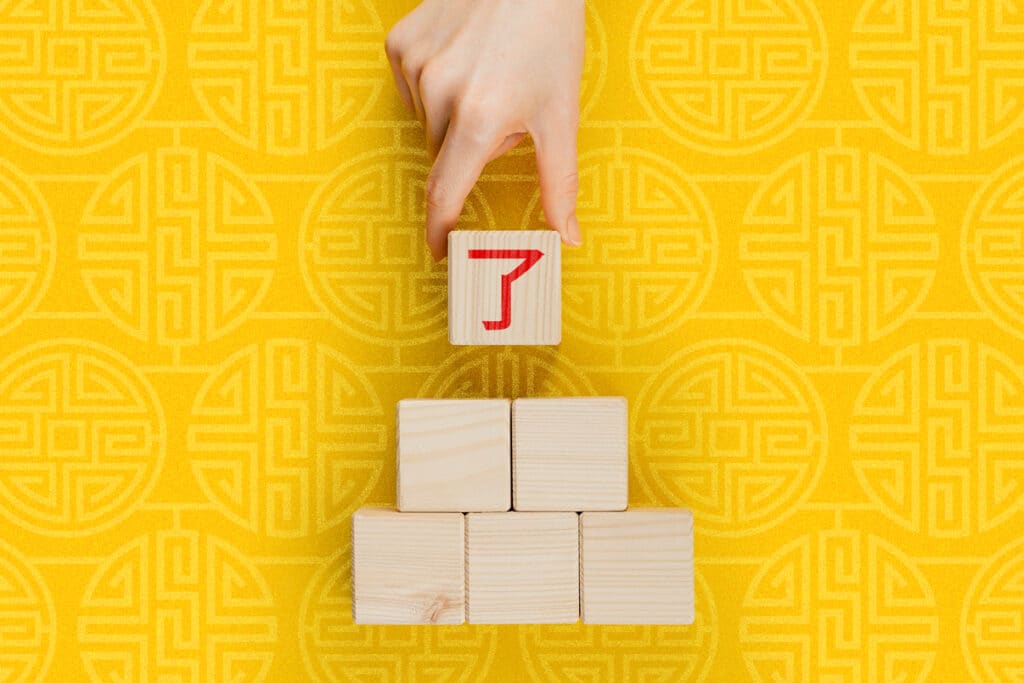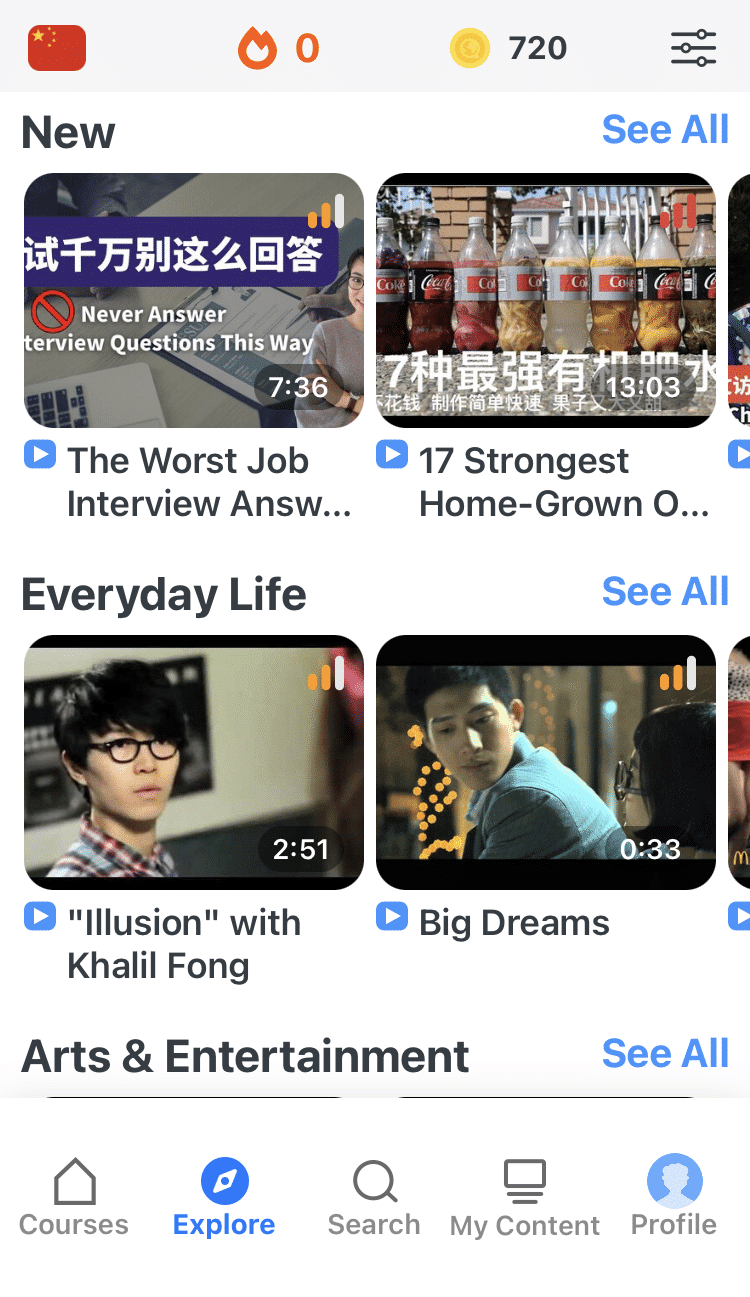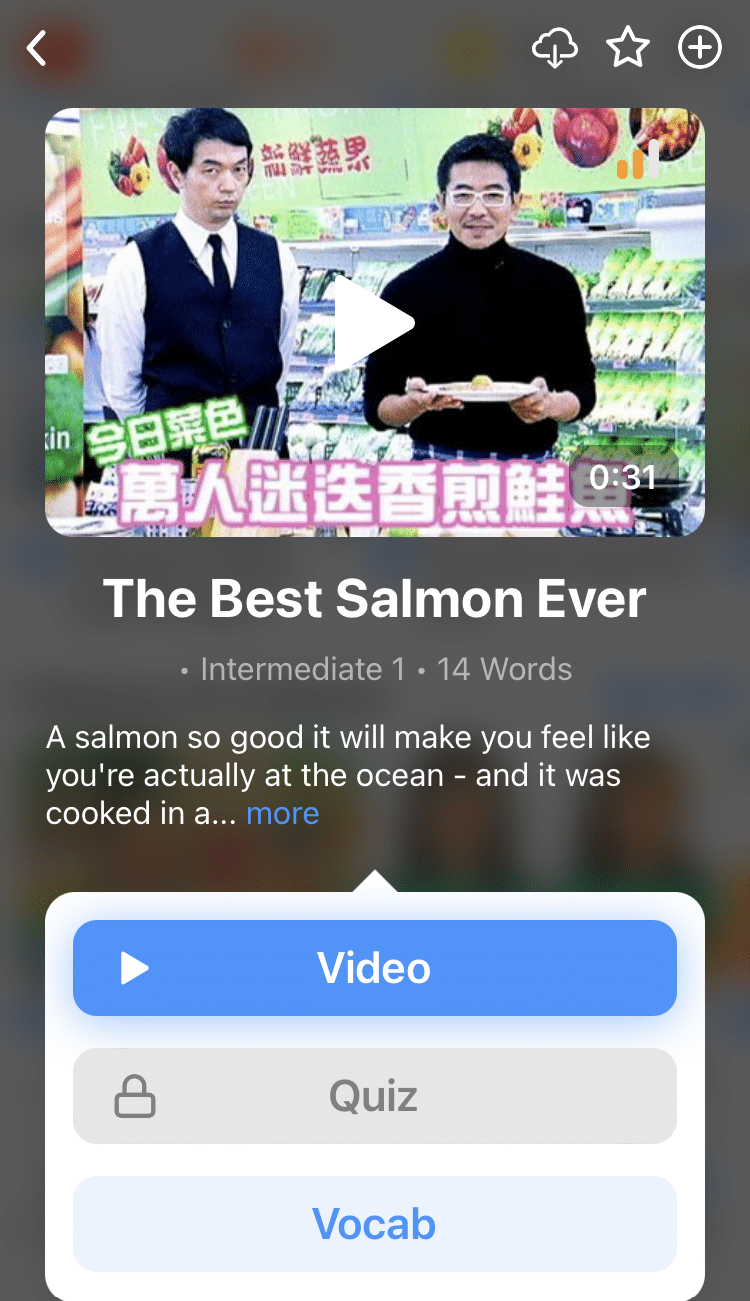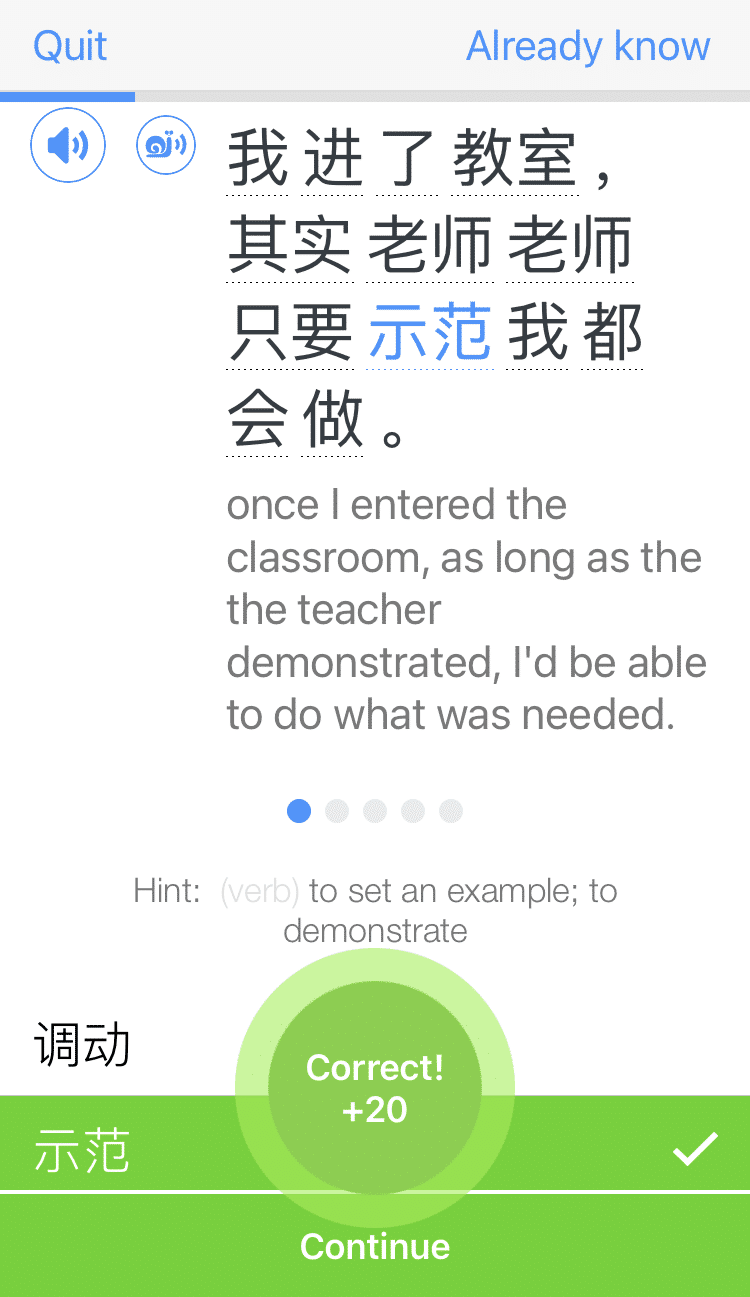
The Chinese Le (了) Particle: Your Guide to Its Aspect and Modal Functions
The Chinese 了 (le) particle can do a lot.
It can change situations, express time durations, complete an action and even describe ongoing events.
With all of these varied uses, knowing when and how to apply 了 can be tricky.
But that’s why we’re here!
Whether you’re a grammar nerd ready to tackle the 了 particle, or you’ve reached your wit’s end trying to grasp it, read on. In this post, you’ll learn all about the Chinese 了 and eight of its most common uses.
Contents
- What is 了 (le) in Chinese?
- 8 Ways to Use the Chinese Le (了)
- Tips for Learning the Chinese Particle 了
- And One More Thing...
Download: This blog post is available as a convenient and portable PDF that you can take anywhere. Click here to get a copy. (Download)
What is 了 (le) in Chinese?
In Chinese, 了 is divided into two types of particles: the aspect particle and the modal particle. This is because 了 is used in two different ways:
- Expressing the completion of an action
- Expressing a change in a situation
Aspect particle 了 is called 了1 and comes at the end of a verb to show that an action has been completed.
Modal particle 了 is called 了2 and comes at the end of a sentence to show that a previous situation has now been changed.
Remembering when and how to use which 了 can be a bit tricky, but never fear. Let’s dive deeper into the uses of both the aspect particle 了 and the modal particle 了.
Aspect Particle 了
The aspect particle 了 is used to express the completion of an action. It comes at the end of a verb in order to show the action has been done.
For example, note the difference between these two sentences:
- 我买两个苹果。
(wǒ mǎi liǎng ge píng guǒ.)
I buy two apples. - 我买了两个苹果。
(wǒ mǎi le liǎng ge píng guǒ.)
I bought two apples.
Here are some more examples that show the completion of an action:
我看了这本书。
(wǒ kàn le zhè běn shū.)
I read this book.
我吃了三个小时。
(wǒ chī le sān ge xiǎo shí.)
I ate for three hours.
In these sentences, the 了 particle is placed at the end of the verb because the action has been completed and is now in the past.
An important rule to know about using the aspect particle 了 is that it cannot be used in negative sentences. This is because the negation words 没 (méi) and 不 (bù) are used to make verbs negative.
For example:
我没看这本书。
(wǒ méi kàn zhè běn shū.)
I didn’t read this book.
我没买两个苹果。
(wǒ méi mǎi liǎng ge píng guǒ.)
I didn’t buy two apples.
我没吃三个小时。
(wǒ méi chī sān ge xiǎo shí.)
I didn’t eat for three hours.
If the sentence is negative (expressing how you didn’t do something), the particle 了 is not needed.
Modal Particle 了
The modal particle 了 is used to express a change in a previous situation. It is used to differentiate a past situation from a current one. Some learners find it easier to remember by thinking of the particle 了 as meaning “now.”
Modal particle 了 comes at the end of the sentence describing the new situation instead of at the end of a verb.
For example, note the difference between these two sentences:
- 我工作了一整天,现在很累。
(wǒ gōng zuò le yī zhěng tiān, xiàn zài hěn lèi.)
I worked all day, I am tired. - 我工作了一整天,现在很累了。
(wǒ gōng zuò le yī zhěng tiān, xiàn zài hěn lèi le.)
I worked all day, I am tired now.
Or, here’s another example:
我以前不喜欢看书,可是现在我非常喜欢了。
(wǒ yǐ qián bù xǐ huān kàn shū, kě shì xiàn zài wǒ fēi cháng xǐ huān le.)
I used to not like reading books, but now I like it a lot.
Unlike the aspect particle 了, the modal particle 了 can be used in negative sentences. In this situation, many learners find it easier to think of 了 as meaning “anymore.”
For example:
我以前喜欢看书,可是现在不喜欢了。
(wǒ yǐ qián xǐ huān kàn shū, kě shì xiàn zài bù xǐ huān le.)
I used to like reading books, but now I don’t.
我们以前是同学,可是现在不是了。
(wǒ men yǐ qián shì tóng xué, kě shì xiàn zài bù shì le.)
We used to be classmates, but we aren’t anymore.
8 Ways to Use the Chinese Le (了)
1. 太 (tài) + Adjective + 了
Function: Modal Particle 了2
The sentence pattern “太 + 了” is used to express excessiveness. For example:
今天太热了!
(jīn tiān tài rè le!)
Today is too hot!
我昨天晚上睡得不好,我太累了!
(wǒ zuó tiān wǎn shàng shuì de bù hǎo, wǒ tài lèi le!)
Last night I didn’t sleep well, I’m so tired!
菜太多了,我吃不完!
(cài tài duō le, wǒ chī bù wán!)
There is too much food, I can’t eat it all!
2. Verb + (Object) + 了
Function: Aspect Particle 了1
One of the very first uses of 了 you’ll learn as a beginner is that when it comes after a verb, it describes a completed action. Let’s take a look at some examples:
我吃早饭了。
(wǒ chī zǎo fàn le.)
I ate breakfast.
我去超市了。
(wǒ qù chāo shì le.)
I went to the supermarket.
他回家了。
(tā huí jiā le.)
He went home.
It’s important to note that when a list of things follows the verb, you need to place 了 before the list.
我吃了三个汉堡包。
(wǒ chī le sān ge hàn bǎo bāo.)
I ate three hamburgers.
我去超市买了五个苹果。
(wǒ qù chāo shì mǎi le wǔ ge píng guǒ.)
I went to the supermarket and bought five apples.
他回家看了一场电影。
(tā huí jiā kàn le yī chǎng diàn yǐng.)
He went home and watched a movie.
3. Subject + 都 (dōu) + Verb + 了
Function: Modal Particle 了2
The sentence pattern “subject + 都 + verb + 了” indicates that the subject has already done something. In this usage, you can think of the particle 了 as meaning “already.”
我都知道了。
(wǒ dōu zhī dào le.)
I already know.
你都吃过了。
(nǐ dōu chī guò le.)
You already ate.
他们都去了。
(tā men dōu qù le.)
They already left.
4. Verb + 完了 (wán le)
Function: Modal Particle 了2
By placing 完了 at the end of a typical subject + verb sentence, you indicate that the verb has been finished. This is called a complement of result.
我把作业做完了。
(wǒ bǎ zuò yè zuò wán le.)
I finished my homework.
他终于说完了。
(tā zhōng yú shuō wán le.)
He is finally done speaking.
你吃完了吗?
(nǐ chī wán le ma?)
Are you done eating?
5. New Situation + 了
Function: Modal Particle 了2
This structure involves the modal particle 了. If you want to describe a change in a situation, simply describe the new situation and add 了 to the end of the sentence.
我回来了。
(wǒ huí lái le.)
I have returned. (I’m back now.)
我不上班了。
(wǒ bù shàng bān le.)
I don’t go to work anymore.
我以前不吃肉,可是现在吃了。
(wǒ yǐ qián bù chī ròu, kě shì xiàn zài chī le.)
I used to not eat meat, but now I do.
6. Verb + Object + Verb + 了 + Time Duration
Function: Modal Particle 了2
When the particle 了 is placed immediately after the verb and is followed by a timeframe, it indicates the duration of an event that happened in the past and has been completed.
Note that when followed by an object, the verb must be repeated twice—once before the object and once after.
我学中文学了一年。
(wǒ xué zhōng wén xué le yì nián.)
I studied Chinese for one year.
她住在美国住了五年。(tā zhù zài měi guó zhù le wǔ nián.)
She lived in America for five years.
你唱歌唱了三个小时。
(nǐ chàng gē chàng le sān ge xiǎo shí.)
You sang for three hours.
7. Verb + Object + Verb + 了 + Time Duration + 了
Function: Modal Particle 了2
If the particle 了 is added at the end of the sentence structure in the previous example, the meaning becomes slightly different. Instead of indicating that the verb happened in the past and has been completed, it indicates that the action is still happening.
我中文学了一年了。
(wǒ zhōng wén xué le yī nián le.)
I’ve been learning Chinese for one year (and still am).
她在美国住了五年了。
(tā zài měi guó zhù le wǔ nián le.)
She has been living in America for five years (and still is).
你唱了三个小时了。
(nǐ chàng le sān ge xiǎo shí le.)
You’ve been singing for three hours (and still are).
8. 已经 (yǐ jīng) + 不/没 + Verb Phrase + 了
Function: Modal Particle 了2
This sentence pattern means that the action (verb phrase) is not happening anymore.
我已经不想去了。
(wǒ yǐ jīng bù xiǎng qù le.)
I don’t want to go anymore.
我已经不在家了。
(wǒ yǐ jīng bù zài jiā le.)
I’m not at home anymore.
我已经不想吃了。
(wǒ yǐ jīng bù xiǎng chī le.)
I don’t want to eat anymore.
Tips for Learning the Chinese Particle 了
Learning particles is often one of the most difficult parts of learning Chinese grammar because it can be very different from other languages. And in the case of 了, the particle has multiple usages.
Here are some key tips for learning and mastering this particular Chinese particle:
- Know the difference between the two usages. Every instance of 了 is either the aspect particle 了 or the modal particle 了. Knowing the difference will help you identify and understand this particle when you see it.
- Listen for when native speakers use 了. While watching Chinese movies, dramas or YouTube videos, pay attention to when the speakers use 了. With the FluentU language learning program, you can watch Chinese videos with expert-vetted subtitles to see how 了 is used in context.
- Create your own sentences. You’ll never master grammar if you never use it! Write sentences using both the aspect particle 了 and the modal particle 了. Upload your sentences to a site like italki to get corrections from native speakers.
- Study usages of 了 according to your level. Chinese Grammar Wiki has divided the multitude of 了 usages into levels A1, A2, B1 and B2. So don’t stress—learn what you need at your current level.
- Use a mixture of grammar approaches. Combine thorough, grammar-based studying (the analytical approach) with immersive learning (the inductive approach) for the most beneficial way of studying grammar naturally and effectively.
And there you have it: eight simple sentence structures using the Chinese 了.
Master these patterns and you’ll have a great understanding of this multifunctional particle!
Download: This blog post is available as a convenient and portable PDF that you can take anywhere. Click here to get a copy. (Download)
And One More Thing...
If you want to continue learning Chinese with interactive and authentic Chinese content, then you'll love FluentU.
FluentU naturally eases you into learning Chinese language. Native Chinese content comes within reach, and you'll learn Chinese as it's spoken in real life.
FluentU has a wide range of contemporary videos—like dramas, TV shows, commercials and music videos.
FluentU brings these native Chinese videos within reach via interactive captions. You can tap on any word to instantly look it up. All words have carefully written definitions and examples that will help you understand how a word is used. Tap to add words you'd like to review to a vocab list.
FluentU's Learn Mode turns every video into a language learning lesson. You can always swipe left or right to see more examples for the word you're learning.
The best part is that FluentU always keeps track of your vocabulary. It customizes quizzes to focus on areas that need attention and reminds you when it’s time to review what you’ve learned. You have a 100% personalized experience.
Start using the FluentU website on your computer or tablet or, better yet, download the FluentU app from the iTunes or Google Play store. Click here to take advantage of our current sale! (Expires at the end of this month.)





